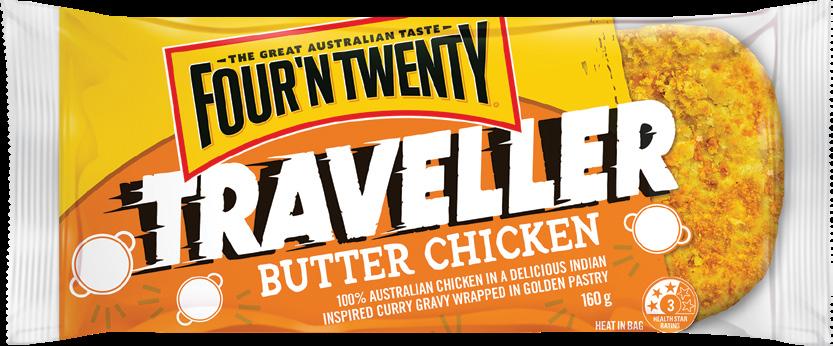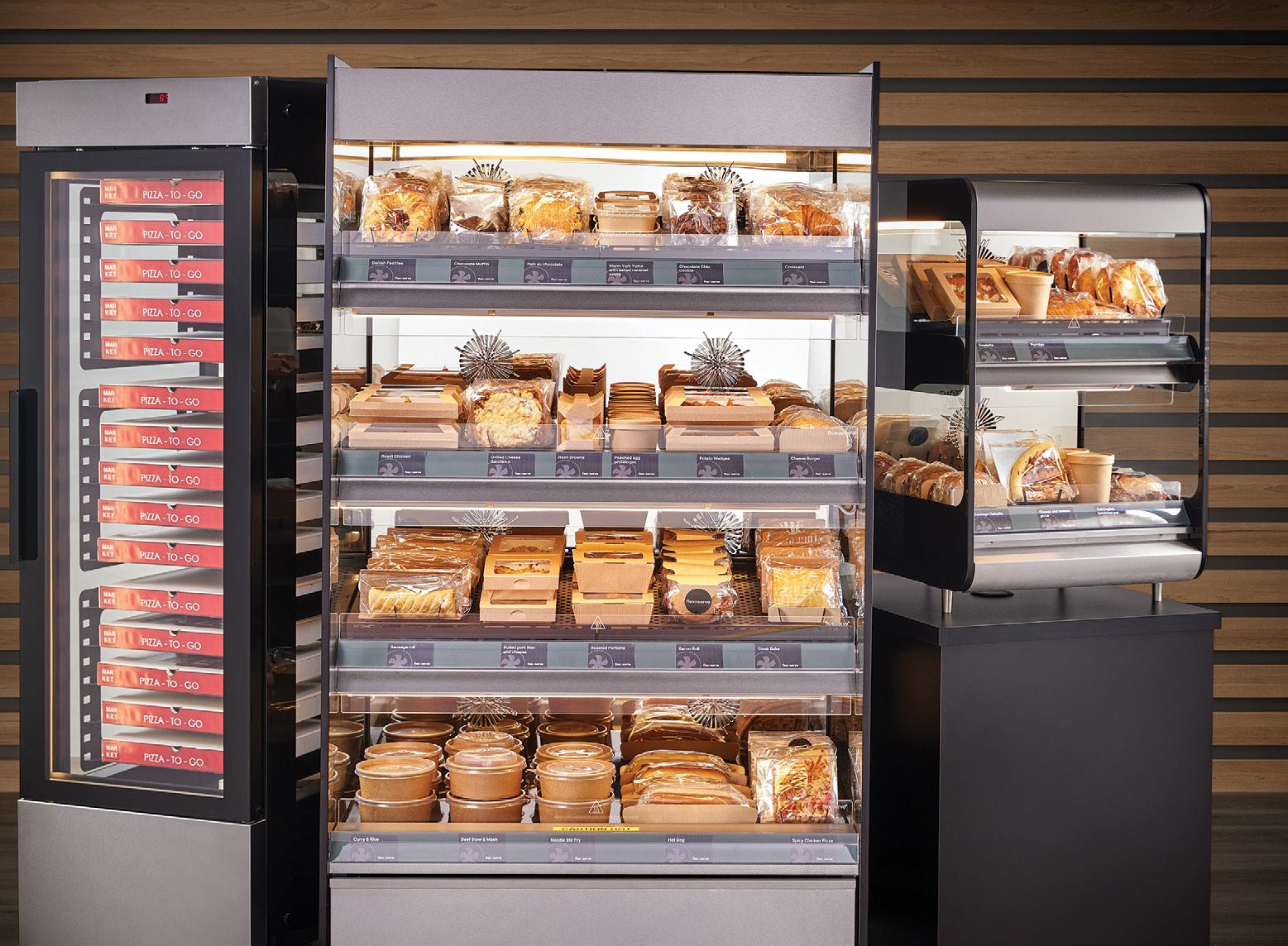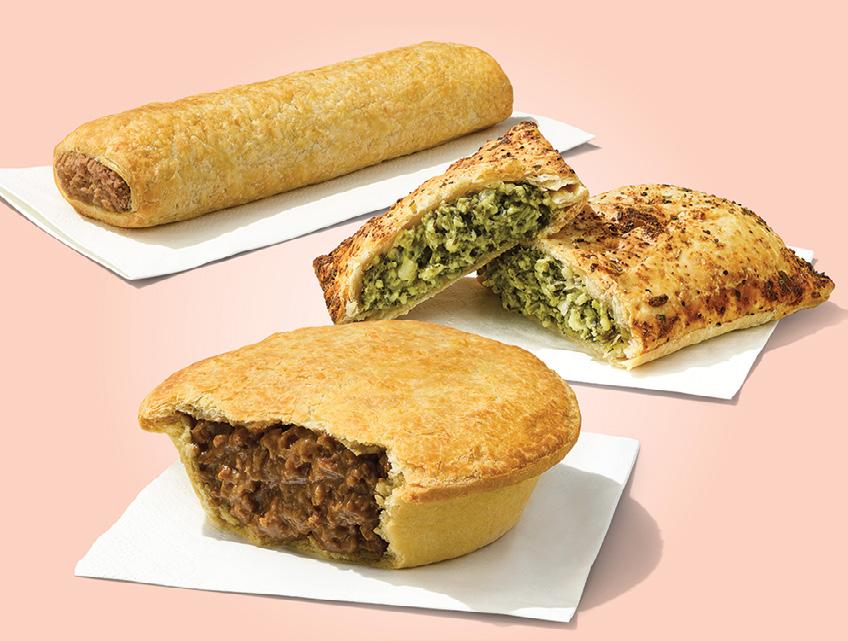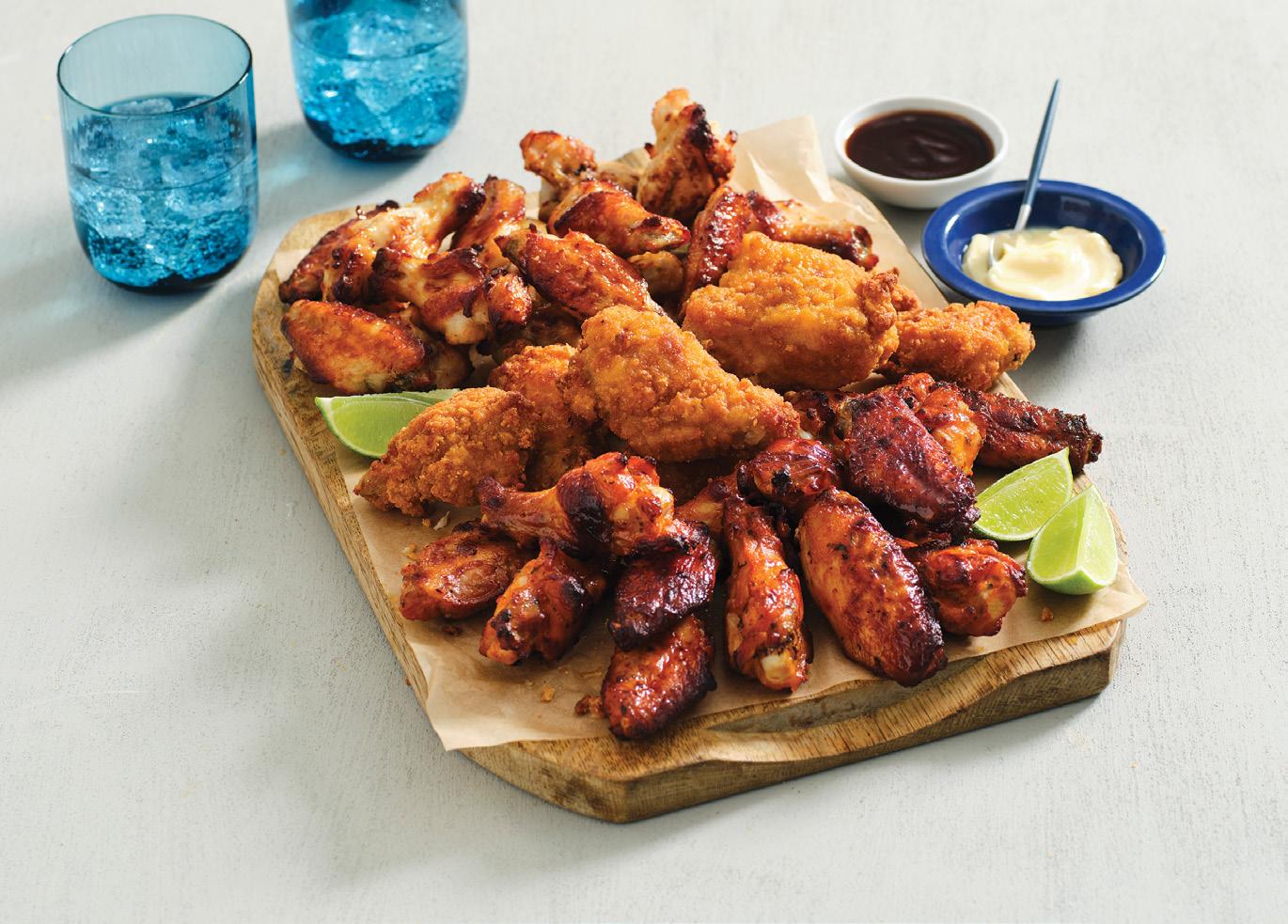
8 minute read
FEATURE: HOT FOOD
Hot food evolution
How P&C retailers are adapting their hot food offerings to meet changing consumer expectations.
Words Deb Jackson
THE HOT FOOD category has become an essential revenue driver for petrol and convenience (P&C) retailers across Australia. As consumer demands shift, traditional offerings such as pies and sausage rolls are being complemented with fresh, high-quality, and diverse meal solutions.
Retailers and suppliers are adapting to this transformation by embracing innovation, focusing on healthier options, premium ingredients, and leveraging technology to streamline operations.

According to the 2024 AACS State of the Industry Mid-Year Report, the Foodservice category experienced growth of 4.3 per cent in the first half of the year. While this is a positive trend, it marks a slowdown from the doubledigit increases seen in previous years. Unit sales dropped, reflecting some of the challenges in the market, even as the unmeasured market continues to outperform the measured market. Despite these fluctuations, the hot food sector remains resilient, with Take Home Food outpacing On-the-Go options with a strong 6.2 per cent growth. The shift towards Take Home Food underscores evolving consumer preferences for convenience without compromising on quality.
Healthier and premium options
In response to changing tastes, retailers are expanding their hot food offerings to meet the growing demand for varied, convenient, and healthier meal solutions. This includes introducing plant-based options, meals featuring premium ingredients, and international flavours to appeal to a wider range of customers, along with innovative collaborations between traditional food brands and other well-known Australian brands.
Theo Foukkare, CEO of AACS, says: “Retailers are realising the importance of a holistic approach to foodservice, focusing on both quality and convenience to meet evolving consumer expectations. The demand for premium ingredients and healthier choices is no longer a trend but a fundamental expectation from customers.”
One of the key challenges, however, lies in maintaining the balance between providing healthier options and ensuring that these meals remain convenient and cost-effective for busy consumers.
Simon Day, Category Manager at Reddy Express, explains that “Hot fast food provides warm, fast, and delicious options that are part of the DNA of the P&C channel. The category thrives over the winter months and in our commuter/road trip locations. It is a key pillar in driving conversion of petrol customers, creating a destination in-store for breakfast, lunch, and dinner.”
This insight reinforces the importance of convenience in the hot food sector, particularly when balancing quality with accessibility.

Anand Surujpal, Chief Marketing and Growth Officer for Patties Food Group, highlights the need for innovation in meeting consumer expectations.
“In the convenience sector, it’s not just about providing food that fits into our customers’ busy lives but also offering experiences that align with consumer trends,” he says.
Surujpal emphasises that the key to success lies in the ability to deliver both quality and convenience.
“Retailers who succeed in the hot food sector are those who are able to combine grab and go convenience, with a product range that’s available (on shelf at the right time) and meets their customer needs, which staff can prepare with ease.”
International fusion flavours and increased customisation
Emerging trends show that consumers are increasingly looking for new flavour profiles and unique meal experiences. International and fusion flavours are making their way into P&C retailers’ hot food menus, giving consumers a wider range of choices that extend beyond the familiar comfort foods.
In the convenience sector, it’s not just about providing food that fits into our customers’ busy lives but also offering experiences that align with consumer trends.
- Anand Surujpal, Chief Marketing and Growth Officer, Patties Food Group
Rheyanan Hancox, National Account Manager – Foodservice at Baiada, highlights the growing demand for global flavours, saying: “Consumers are looking for high-quality ingredients, unique flavour profiles, and internationally inspired menu items. Think Korean and Nashville-style hot chicken.”
In line with this trend, Surujpal from Patties Food Group underscores how global flavours are becoming a staple in the hot food sector.
“Consumers’ palates are evolving, and they’re looking for more variety. At Patties Food Group, we are developing products that reflect this shift towards global flavours – for example, Butter Chicken or Bolognese, two flavours of Travellers landing in market this Autumn. These types of flavours cater to people who want something exciting and new, but they also want them to be easy to grab and go,” he explains.
Customisation is another key trend that’s shaping the hot food category. Consumers want more control over their meals, preferring to mix and match items or opt for personalised options. This growing demand for customisation is influencing how retailers structure their food offerings. Instead of a one-size-fits-all approach, many P&C retailers are introducing build-yourown meal options, allowing customers to pick and choose ingredients based on their tastes and dietary needs.
Day from Reddy Express highlights the new interest in products such as Chicken Snacking, Kranskys, and Pastry Pockets, which further reinforces this shift. He says that while the meat pie and sausage roll still lead, there’s been incremental growth and interest from customers in more adventurous options and flavours.
Streamlining operations
As consumer expectations evolve, technology is playing a pivotal role in helping P&C retailers and suppliers meet the demand for higher-quality food offerings. Smart kitchen equipment, advanced inventory management systems, and automated ordering technologies are becoming integral tools for streamlining operations. These innovations help retailers deliver consistent quality, improve efficiency, and reduce waste, all while keeping up with growing consumer demands.
Michael Brick, General Manager at Meris Food Equipment, emphasises how crucial technology is to the evolution of the P&C sector.
“Retailers need to invest in equipment that will help them offer high-quality food with minimal labour requirements,” he explains. “Automated, ventless deep fryers and compact cooking solutions are essential for ensuring that food can be prepared quickly without compromising on quality.”

Self-order kiosks and mobile ordering apps are another area where technology is enhancing the customer experience. These technologies offer customers greater convenience, allowing them to place orders quickly without having to wait in line. In turn, retailers can reduce wait times and manage customer flow more effectively, improving the overall in-store experience.
Additionally, technologies that assist with food tracking, inventory management, and predictive ordering are helping retailers ensure that they are always prepared to meet demand. This helps them avoid stockouts and reduce food waste, which is an increasingly important consideration as sustainability becomes a larger focus in the retail sector.
Strategic partnerships
According to the 2024 AACS State of the Industry Mid-Year Report, the future of the hot food category lies in collaborative efforts between retailers and suppliers. Both parties recognise that a category-wide approach is essential for longterm success.
Retailers have identified coffee and on-the-go food as the most significant growth opportunities, while suppliers are focusing on bundling food, beverages, and snacks to create attractive meal solutions for consumers.
Surujpal from Patties Food Group notes that successful collaboration between suppliers and retailers can help unlock growth.
“At Patties Food Group, we have always focused on building strong relationships with our retail partners. By working together, we can offer not only the right products but also merchandising solutions that help drive sales,” he says. “For example, creating promotions and meal combos, like offering a hot food item with a drink or snack, creates value for the customer while increasing average transaction value.”

Baiada’s Hancox also emphasises the importance of strategic collaboration, saying: “For retailers, collaborating with suppliers to create exclusive offerings and promotions is key to staying relevant in an increasingly competitive market.
“Whether it’s a new meal combo, limited-time offers (LTOs), or unique flavour collaborations, this collaboration is crucial for meeting the diverse needs of consumers.”
These strategic partnerships are becoming crucial for P&C retailers who want to stay ahead of the curve in a competitive market. By collaborating with suppliers on product development, exclusive offerings, and promotions, retailers can stay relevant and responsive to consumer demand.
Despite challenges, the hot food category remains an important segment of the P&C retail market. With a focus on quality, innovation, and technology, the category is well-positioned to meet the demands of an ever-evolving consumer base, offering exciting growth potential for both retailers and suppliers alike.
TRENDS SHAPING THE HOT FOOD CATEGORY
• Health-conscious eating: The growing demand for healthier, plant-based, gluten-free, and low-calorie options is reshaping the offerings at P&C stores.
• International flavours: Consumers are seeking bold, global flavours, with an increasing interest in foods like Korean BBQ, Nashville hot chicken, and Mediterranean wraps.

• Convenience and portability: Grab-and-go meal solutions are essential for P&C retailers. Items like wraps, sliders, and bitesized portions are crucial to meet the needs of busy, on-the-go consumers.
• Technology and automation: Smart kitchen equipment, automated ordering systems, and mobile apps are helping retailers improve food quality, streamline operations, and enhance the customer experience.
STOCK ROTATION AND MERCHANDISING
Keeping hot food cabinets well-stocked and visually appealing is critical for maximising impulse sales.
• Rotate stock frequently to maintain freshness.
• Keep displays looking full and inviting, especially during peak hours.
• Use clear pricing and signage to highlight meal deals and promotions.
THE POWER OF LIMITED-TIME OFFERS (LTOS)
Introducing seasonal and exclusive products can drive customer interest and repeat visits.
• Offer limited-edition flavours that tap into trending tastes.
• Test new concepts through LTOs before making them permanent.
• Use social media and in-store promotions to create excitement.




